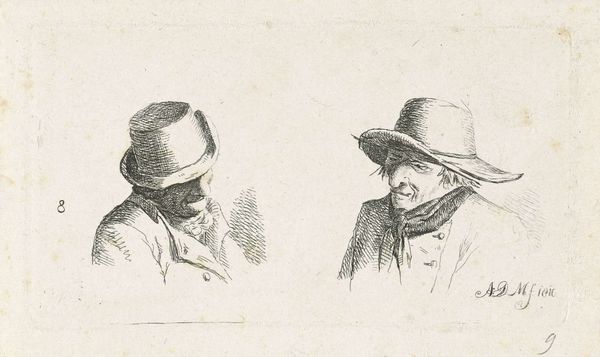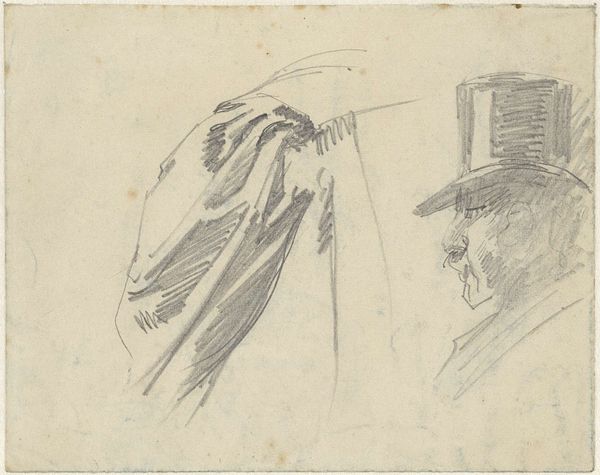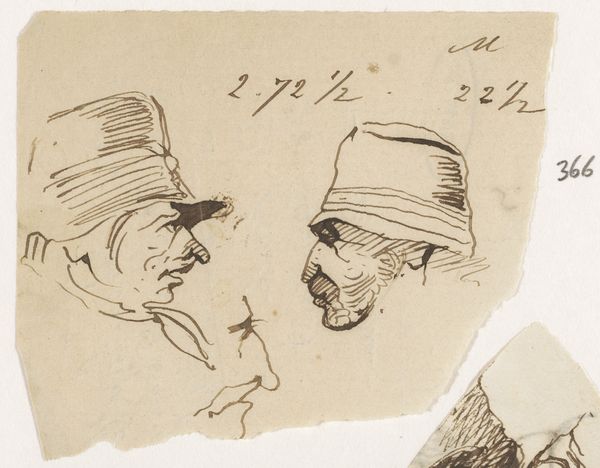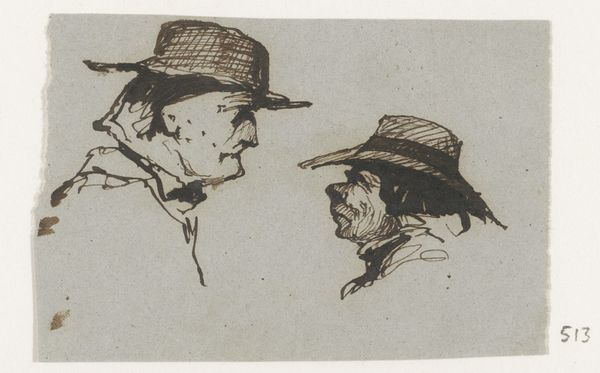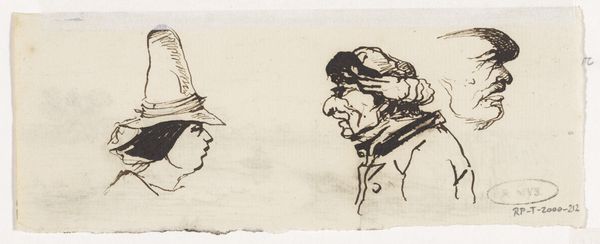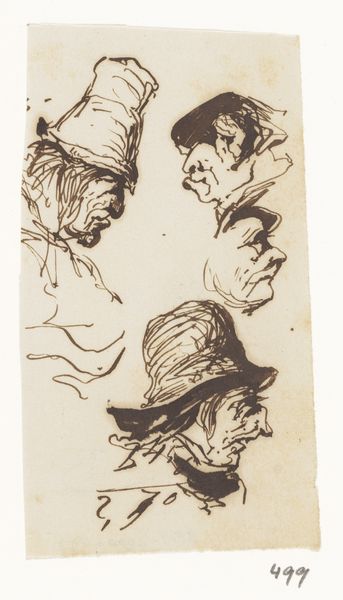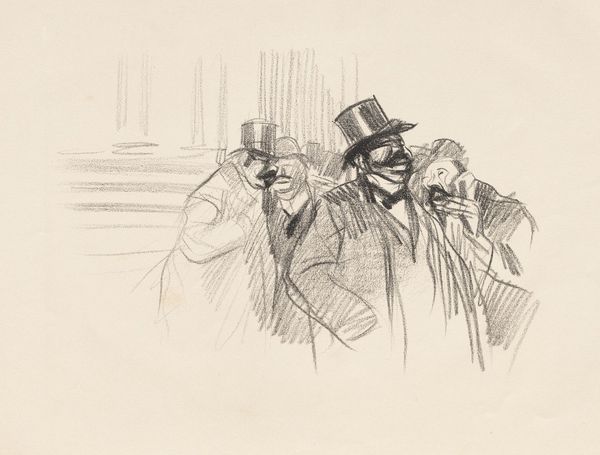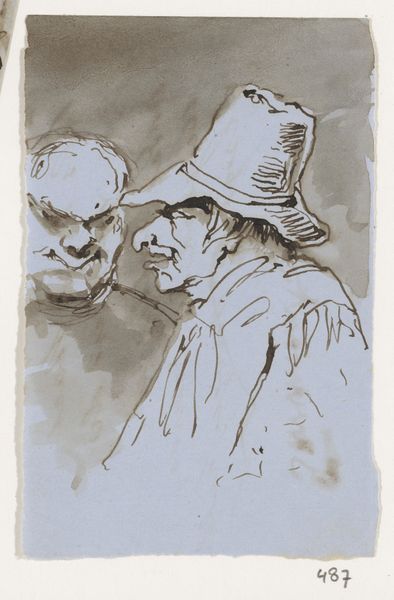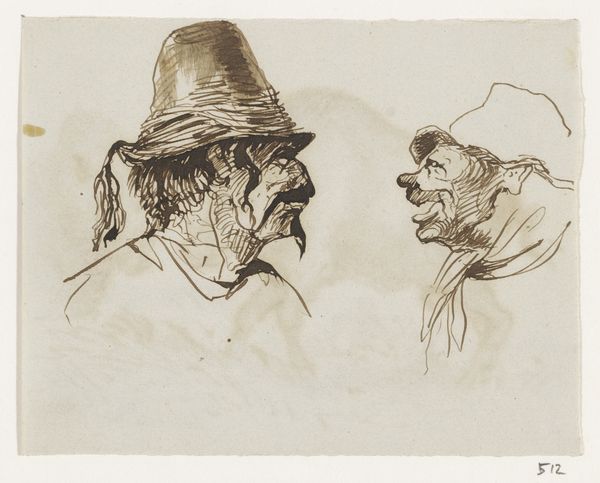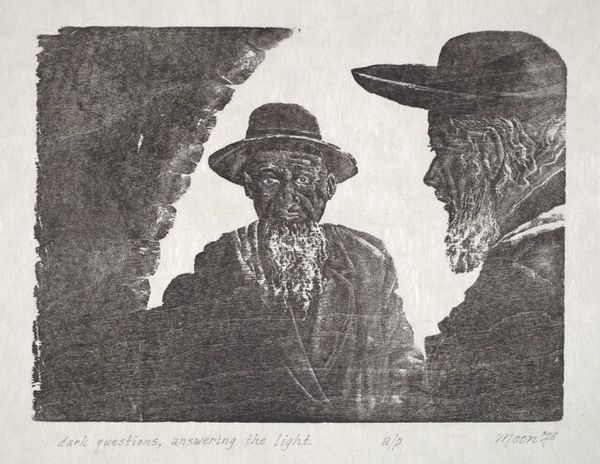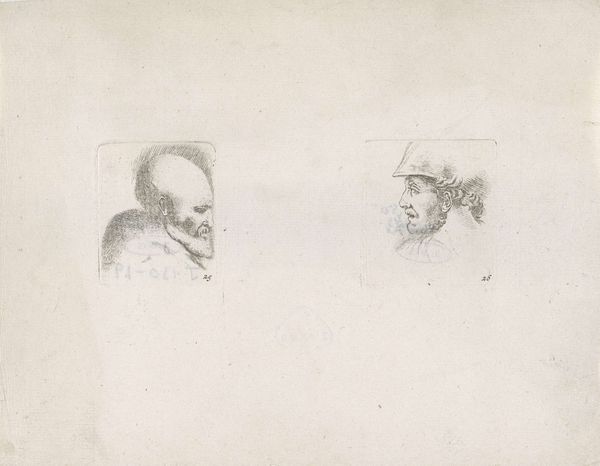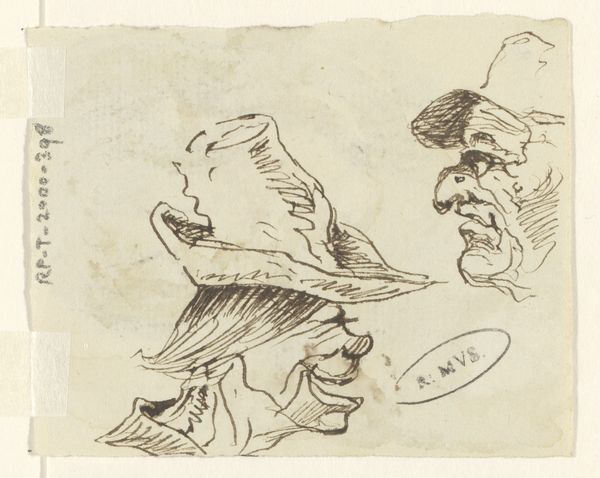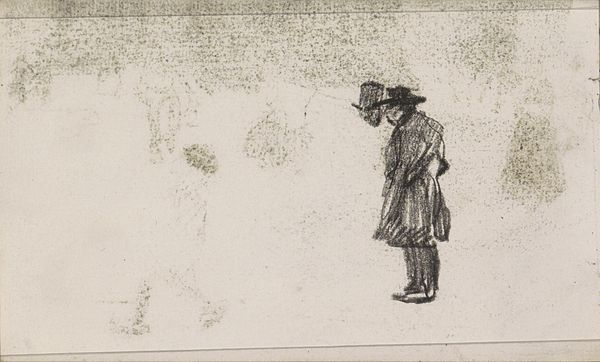
Portretten van Abraham Uytenbogaart en Hendrik Stokvisch 1796 - 1850
0:00
0:00
jeanaugustindaiwaille
Rijksmuseum
drawing, pencil
#
portrait
#
drawing
#
figuration
#
romanticism
#
pencil
Dimensions: height 140 mm, width 211 mm
Copyright: Rijks Museum: Open Domain
Curator: Allow me to introduce this compelling double portrait drawing. Created sometime between 1796 and 1850 by Jean Augustin Daiwaille, it is rendered in pencil and kept here at the Rijksmuseum. Its title is "Portretten van Abraham Uytenbogaart en Hendrik Stokvisch". Editor: The immediate impression is one of solemn introspection, wouldn’t you agree? The cross-hatching and layered pencil strokes create a rather somber mood. It's all about the surface textures, a rather accomplished technique. Curator: Precisely. The artist employs visible and tangible elements as tools to provoke thoughtful engagement. Notice the intricate, controlled pencilwork: tight lines building up tone and volume. Daiwaille uses the graphic qualities to convey form in these two imposing male figures and their somewhat oppressive hats. Editor: Well, these are obviously symbols of social position; aren’t they the signifiers of a specific bourgeois class? Beyond class though, these hats are an incredibly interesting trope in 18th and 19th century art; they embody the intellectual ambition and moral gravity attributed to men during the Enlightenment. This image reflects an era when male portraits were not just likenesses, but ideological emblems. Curator: Interesting perspective. The graphic strokes create the geometry of the portrait. Compositionally, it's starkly divided, and almost symmetrical. Note the background is vague and washed out so to provide the most focus on these men. We are left with a powerful exploration of form. Editor: And this careful composition does so much more; notice how it allows us to probe their psychological landscape. There’s a melancholy and a mutedness – their symbolic garb is worn in resignation or perhaps pensiveness. It prompts us to ask about their experiences in those years when their likeness was captured on paper. Curator: In terms of the formalism and the Romantic period in general, there is also a balance being sought between expression and restraint, don't you think? Editor: Absolutely, this duality enhances the emotional depth. Examining the symbols reveals layers of social identity while your meticulous structural approach shows the emotional nuance, it's the symbiosis that really engages our minds. Curator: Agreed. It has been wonderful to closely look and contextualize with you "Portretten van Abraham Uytenbogaart en Hendrik Stokvisch." Editor: Yes indeed, these portraits truly allow for multi-layered interpretive richness.
Comments
No comments
Be the first to comment and join the conversation on the ultimate creative platform.
